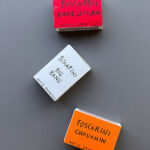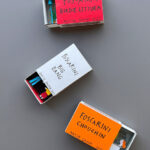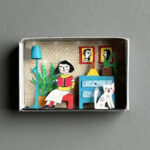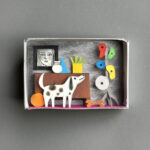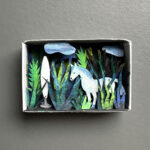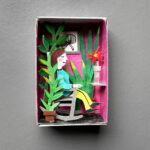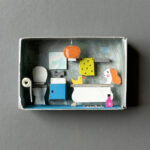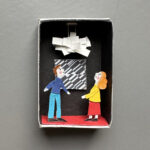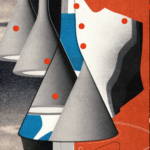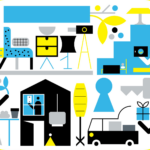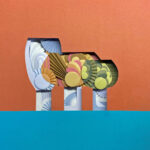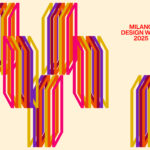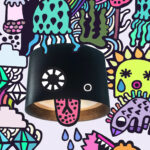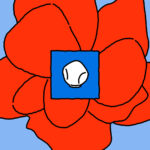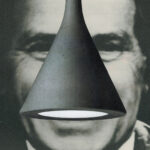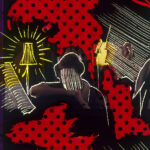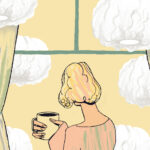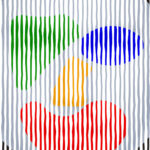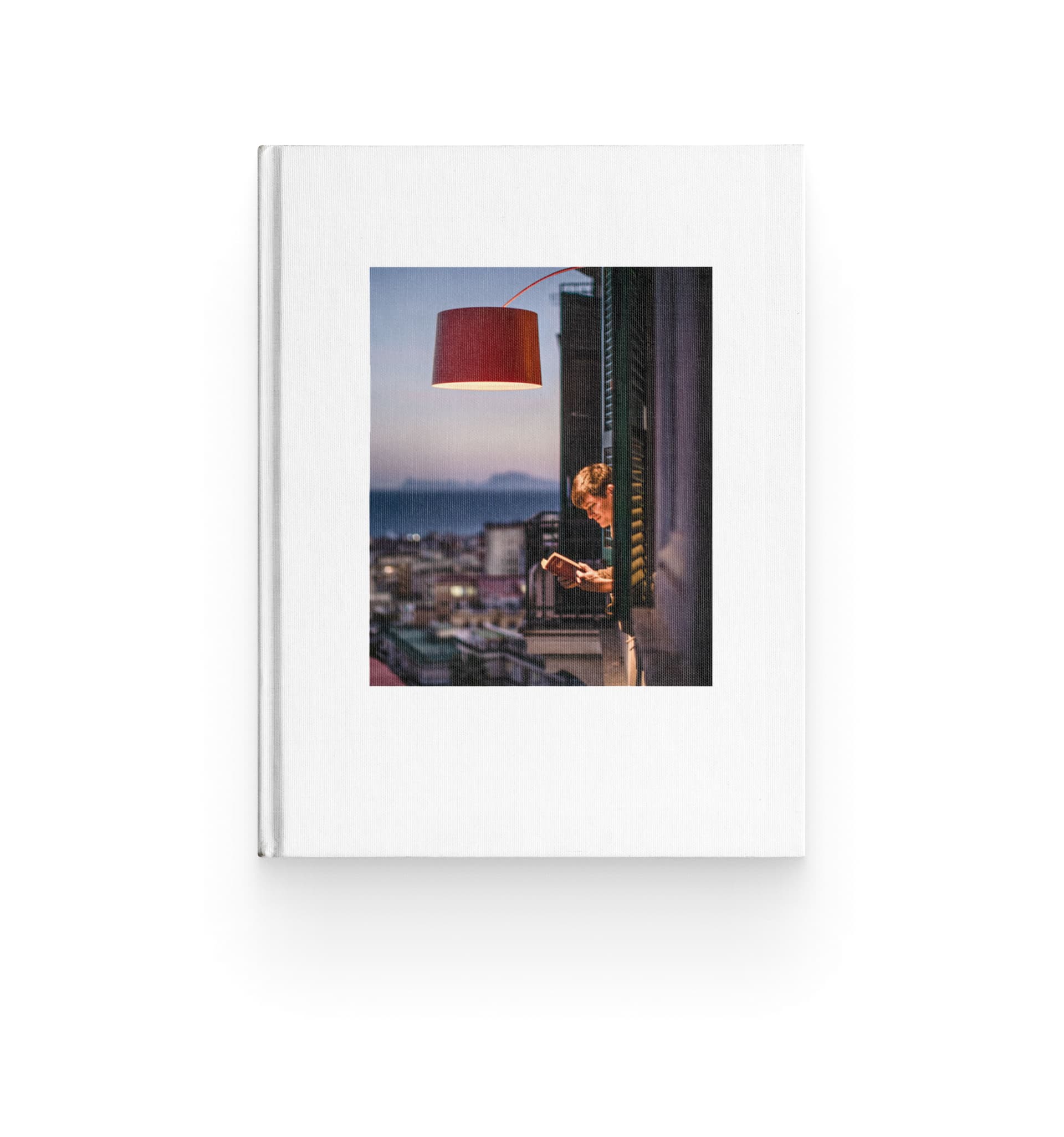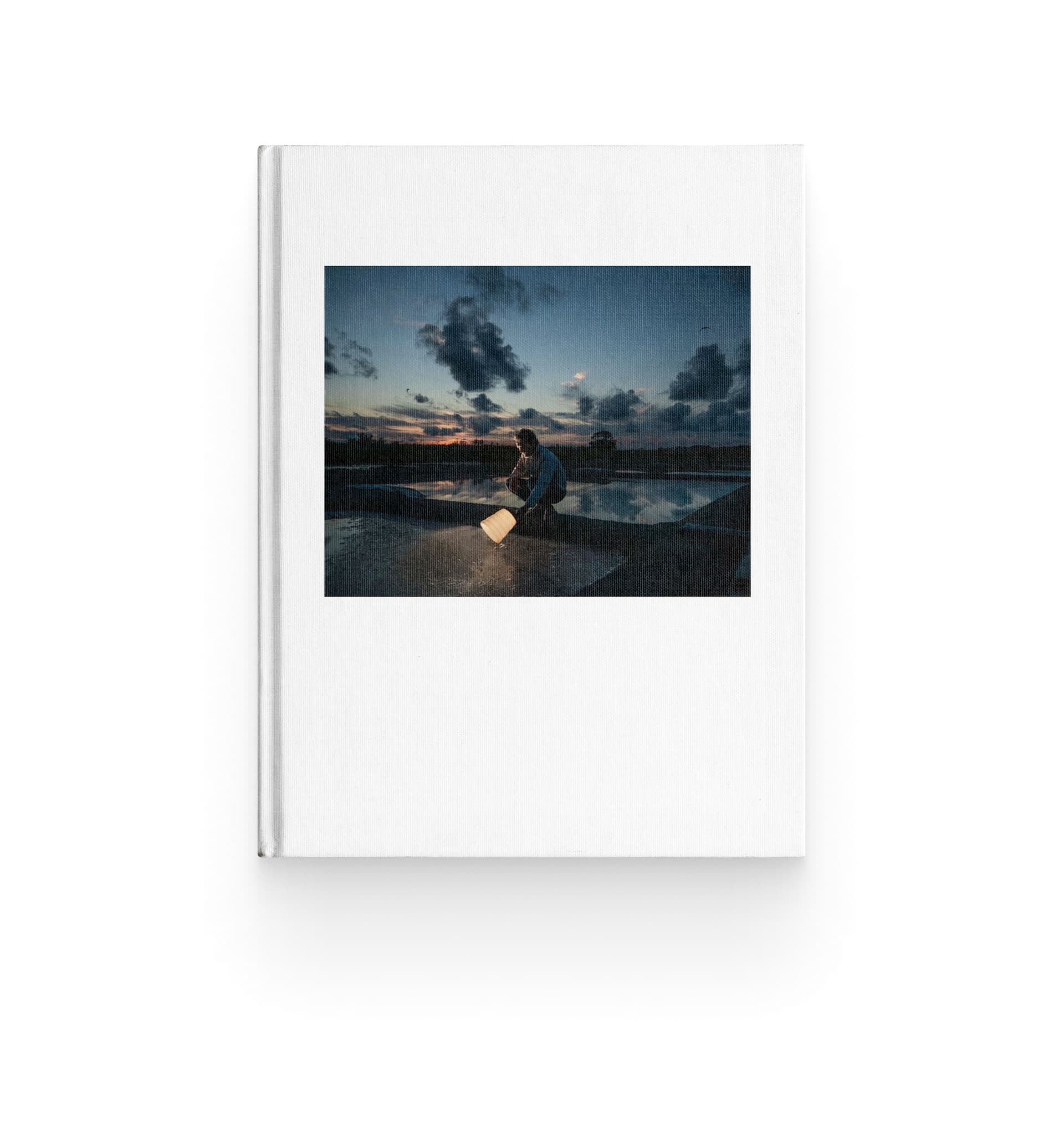Tiny tales and bright lights in Antje Damm’s Matchbox Dioramas
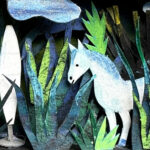
Celebrated children’s author and illustrator Antje Damm integrates Foscarini lamps into enchanting matchbox dioramas portraying home stories within the limited space of a matchbox in her series for Foscarini “What’s in a Lamp?” project.
Antje Damm, born in Wiesbaden, Germany, has made a name for herself in the world of children’s literature and illustration. Formerly an architect, Antje turned her focus to writing and illustrating books for children, with her work being recognized as one of the New York Times / New York Public Library’s Best Illustrated Children’s Books.
Antje brings her unique artistic vision to Foscarini’s “What’s in a Lamp?” editorial project by creating intricate dioramas within little matchboxes. These tiny worlds are not just fascinating, playful miniatures but are imbued with the soul and character of Foscarini’s iconic lamps. “Lamps are not merely sources of light; they are sculptures that enhance our living spaces,” the artist explains. “Good lighting is essential for any space, and it was thrilling to envision which lamps fit into which rooms, blending special and everyday situations.”
Antje’s architectural background shines through in her meticulous approach to these matchbox scenes with her creative routine balancing the freedom of illustrative work with the structured experimentation reminiscent of her architectural days. She crafts each scene with precision, blending techniques like drawing, collage, and paper cutouts to achieve a high level of abstraction and storytelling. For example, the Havana floor lamp’s enduring charm finds a natural setting in a forest that feels almost magical – Orbital becomes a focal point in a domestic scene with its “whimsical and unique design that reminds me of Calder’s mobiles, which I adore,” explains Antje – and another distinct world is created around the dynamic, sculptural shape of the Big Bang suspension lamp, showcased as a counterpoint to an artwork in an art gallery.
“The challenge and joy of this project lay in capturing the essence of each lamp within the confined space of a matchbox. Each scene conveys a story, a feeling, and the unique character of the lamp.”
Antje Damm
Follow the project on Instagram @foscarinilamps to delve deeper into Antje Damm’s imaginative creations and learn more about her artistic journey in our interview!
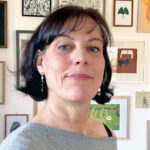
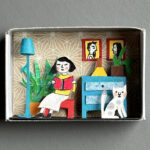
Hello Antje! Can you share a bit about your artistic journey and what inspired you to become an artist?
Drawing and painting have always been my way of expressing myself and what’s going on inside me, something I’ve enjoyed since I was a child. I worked as an architect for several years and stumbled into writing and illustrating children’s books about 20 years ago, almost by accident. Eventually, I had to decide where to focus my efforts because doing both, especially with four children, was too much. Being an artist, author, and illustrator is my dream job. I can work very freely and independently, constantly exploring new paths because I’m a curious person who loves trying new things and veering off the beaten path. Each book is different and presents a new challenge, and visually interpreting an idea is always a risk.
How has your background in architecture influenced your approach to visual storytelling and illustration?
In essence, developing an architectural concept and a book concept are very similar. During my time as an architect, I built many models and worked with them extensively. For some of my illustrations, where I construct sets from paper and cardboard and then photograph them, I approach it the same way. It’s a playful approach, highly experimental and free. I can easily make changes, additions, and then focus and influence through the photos. I also enjoy working in three dimensions.
Your use of mixed media is quite distinctive. How would you describe your style?
In essence, I find it hard to pin down. I illustrate my books in various styles because they deal with different concepts. I blend techniques like drawing, collage, digital illustration, depending on the project. For a recent book, I experimented with paper cutouts for their abstract quality, and it turned out to be a perfect fit for the story.
We’re curious about your matchbox artworks. How did the idea of using matchboxes as a canvas come about?
During the COVID-19 pandemic, all my book tours were canceled, leaving me with much more time on my hands. That’s when I got the idea to build these small matchbox dioramas. Since then, many people have grown fond of my little artworks and want to own one themselves. And I simply enjoy building them. It’s relaxing and fulfilling for me, but also challenging to tell a story in such a confined space.
Can you share insights into your creative routine? How do you maintain inspiration and overcome challenges during the artistic process?
I work from home, and my workspace always feels a bit too small. On the other hand, we live right by the forest, and I need nature to be creative. I spend a lot of time outdoors, marveling at the changing seasons, collecting mushrooms, observing plants and animals, but I also visit exhibitions frequently, always seeking new input.
In the “What’s in a lamp?” series, Foscarini lamps become part of home-stories told within the limited space of a matchbox. How did you integrate Foscarini’s lamps into these tiny narratives, and what challenges or joys did you encounter working with both the lamps and matchboxes simultaneously?
Furniture and lamp design have always fascinated me and were a significant part of my job as an architect. I love beautiful things, and lamps, in particular, are more than just functional fixtures to me; they’re design objects, almost sculptures, that I delight in contemplating repeatedly. Good lighting is essential in any space; it accompanies us constantly and makes the space functional. But it’s also much more than that. It was thrilling for me to consider where each lamp would best fit within different rooms—seeking both distinctive pieces and those that seamlessly blend into everyday settings. I definitely wanted some special ones but also to create ordinary situations.
What inspired you in this project?
The challenge and joy of this project lay in capturing the spirit and essence of each lamp. What thoughts and feelings do they evoke? Where could they be best showcased? For instance, with the Havana lamp, I thought it would fit beautifully in a natural setting, resonating with its archaic charm.
How did you choose which lamps to feature in these miniature scenes?
I chose the lamps that impressed me the most. Big Bang is an interesting sculpture that always looks different. I also selected a small and amusing lamp, like Fleur, because it demonstrates the broad and exciting spectrum that lamps can cover.
Do you have a personal favorite artwork from your “What’s in a lamp?” series, and if so, why?
I particularly like the box with the Orbital lamp. That’s my favorite lamp because it’s funny and so unique, and it reminds me of Calder’s mobiles, which I love.
And more generally, what is your favorite thing to portray?
Scenes from nature and small spaces that have a very special atmosphere.
Your art has a universal appeal transcending language barriers. How do you merge illustration and storytelling in your creative process?
The key to creating children’s books is to tell stories through images that complement and expand upon the text, sometimes asking questions or even contradicting it. The great thing is that anyone can “read” pictures, regardless of the language they speak.
Your illustrations feature a powerful color palette. How do you decide on colors, and what role do they play in conveying the mood of your pieces?
Colors express emotions, and I naturally use them. However, I work very intuitively and don’t overthink it. In my illustrated book ” The Visitor” you can see how colors can tell a story. A little boy visits an elderly woman, bringing color into her gray life.
Your work offers a unique perspective on reality. How do you nurture this creativity and alternative viewpoint?
For me, this perspective is integral to life itself, not just my work. Creativity extends beyond art; it’s about finding solutions and pathways in life, especially during challenging times. This is closely tied to hope, too.
What is creativity for you?
Creativity is an essential part of my life, both personally and professionally. It’s about constantly seeking solutions, exploring new paths, and finding beauty and meaning in everything around me.
